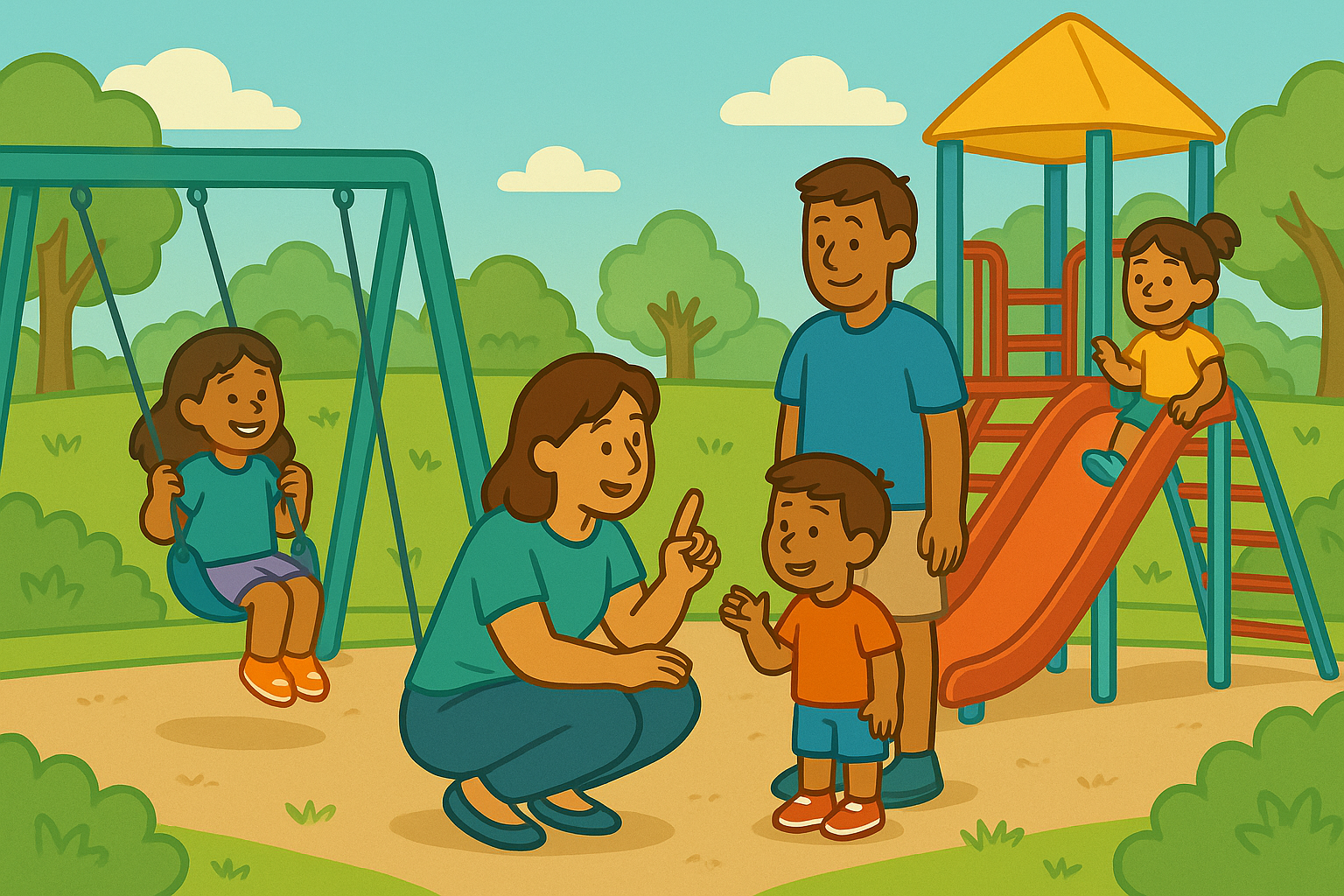Smart Safety Rules for Playgrounds
Smart Safety Rules for Playgrounds
Playgrounds are the heart of childhood. They’re where kids learn to climb, balance, cooperate, and take healthy risks. But while playgrounds are designed for fun, they can also present hidden hazards when rules aren’t clear or supervision lapses.
The goal isn’t to make play restrictive—it’s to make it confidently safe. When children learn the “why” behind smart safety habits, they gain freedom, courage, and lifelong awareness.
Why Playground Safety Matters More Than Ever
Outdoor play builds physical strength, social skills, and emotional resilience. But with increased playtime comes increased exposure to slips, falls, and collisions.
Playground injuries are among the most common childhood accidents, but most are preventable with awareness and consistent habits.
Teaching children simple rules—without fear—empowers them to explore confidently while understanding their limits. It’s the same balance found in How to Teach Stranger Safety Without Scaring Kids, where awareness replaces anxiety.
The Balance Between Freedom and Safety
It’s natural for parents to want to protect their children from harm, but total control can limit growth. Playgrounds provide the perfect environment to practice safe independence.
The key question isn’t: “Is my child completely safe?”
It’s: “Is my child safely challenged?”
By observing from a distance, offering guidance instead of restriction, and allowing manageable risks, parents help kids develop judgment and self-confidence—skills they’ll need for life.
The Playground Safety Mindset
Before heading to the playground, set the tone for what safety means: respect for others, the equipment, and one’s own body.
A healthy safety mindset includes:
Looking out for younger kids and taking turns
Checking surroundings before running or jumping
Asking for help when something feels uncertain
Being gentle, not competitive, during group play
When safety becomes part of play culture, it stops feeling like a rulebook and starts feeling like teamwork—much like the cooperative tone in Family Exercise Routines Kids Actually Enjoy.
Teaching “Look Before You Leap”
Many accidents happen when children are so excited they forget to look. Simple reminders like “Look before you leap” or “Wait your turn” can prevent falls and collisions.
Practical ways to reinforce this habit:
Model it—show kids how to scan for open space before moving.
Turn it into a fun game (“Spot the open path!”).
Praise awareness as much as bravery.
The goal isn’t to make kids fearful—it’s to make them thoughtful explorers who move through space with awareness and care.
Checking Playground Equipment Together
Safety starts before play begins. Make it a shared ritual to check equipment together—it helps children learn to recognize risks on their own.
What to look for:
Hot metal slides or swing seats in summer
Loose bolts, sharp edges, or splintered wood
Wet or icy surfaces
Broken ropes or torn nets
Encourage kids to point out anything unsafe and tell an adult. This empowers them to speak up, just as they would about hygiene or nutrition choices in Healthy Meals and Snacks for Busy Families—where awareness becomes self-advocacy.
Dress for Safe Play
Clothing choices can affect safety more than parents realize.
Tips for dressing smartly for playground time:
Closed-toe shoes with good grip
Avoid long scarves, necklaces, or drawstrings
Use hats with chin straps only if they release easily
Apply sunscreen and tie back long hair to prevent vision obstruction
Practical preparation reduces accidents and helps kids focus on fun. It’s a small but meaningful way to blend comfort and safety into everyday routines.
Supervising Without Hovering
Children thrive when they know an adult is nearby—but not controlling every move.
Balanced supervision looks like:
Staying close enough to step in quickly if needed
Giving verbal cues (“Try using both hands,” “Take your time”)
Watching from a comfortable distance to build independence
Parents who supervise with presence, not pressure, foster trust. The same principle applies in Creating a Family Health Routine, where calm consistency builds confidence in every area of development.
Teaching Kindness and Cooperation
Playground safety isn’t just physical—it’s emotional. Conflicts over turns or space can cause just as much distress as minor injuries.
Teach kids to use words, not force. Phrases like “Can I have a turn after you?” or “Let’s do it together” build empathy and patience.
You can even role-play common playground scenarios at home so kids feel prepared to handle them calmly in real life. Emotional safety is just as important as physical safety—and it keeps the playground a joyful space for everyone.
Age-Appropriate Equipment Awareness
Not all playground structures are suitable for every child. Age-appropriate play helps kids feel confident instead of frustrated.
For toddlers (1–3): short slides, baby swings, and soft ground coverings.
For preschoolers (3–5): small climbing walls, low platforms, and wide steps.
For school-age kids (6–8): taller climbing equipment and obstacle courses.
Following these guidelines ensures children are challenged—but not endangered—at every developmental stage.
Sun, Heat, and Hydration Safety
Playgrounds often mean hours outdoors. Along with movement, make hydration and sun protection part of the fun.
Smart habits to model:
Bring refillable water bottles and take frequent “sip breaks.”
Seek shade during midday sun.
Reapply sunscreen every two hours or after sweating.
As emphasized in Sun Safety Habits for Every Season, teaching kids to protect their bodies in every environment helps build lifelong self-awareness and resilience.
Turning Playtime Into Lifelong Learning
Every trip to the playground offers lessons in judgment, empathy, and confidence. When children understand that safety and fun can coexist, they develop independence rooted in care—not fear.
Encourage them to celebrate small victories: climbing higher, helping a friend, or spotting a potential hazard before it causes trouble.
When families treat playground safety as shared learning instead of constant correction, play becomes what it’s meant to be—joyful, freeing, and full of growth.
This content is for educational purposes and is not a substitute for professional medical or psychological advice.
Popular Parenting Articles


